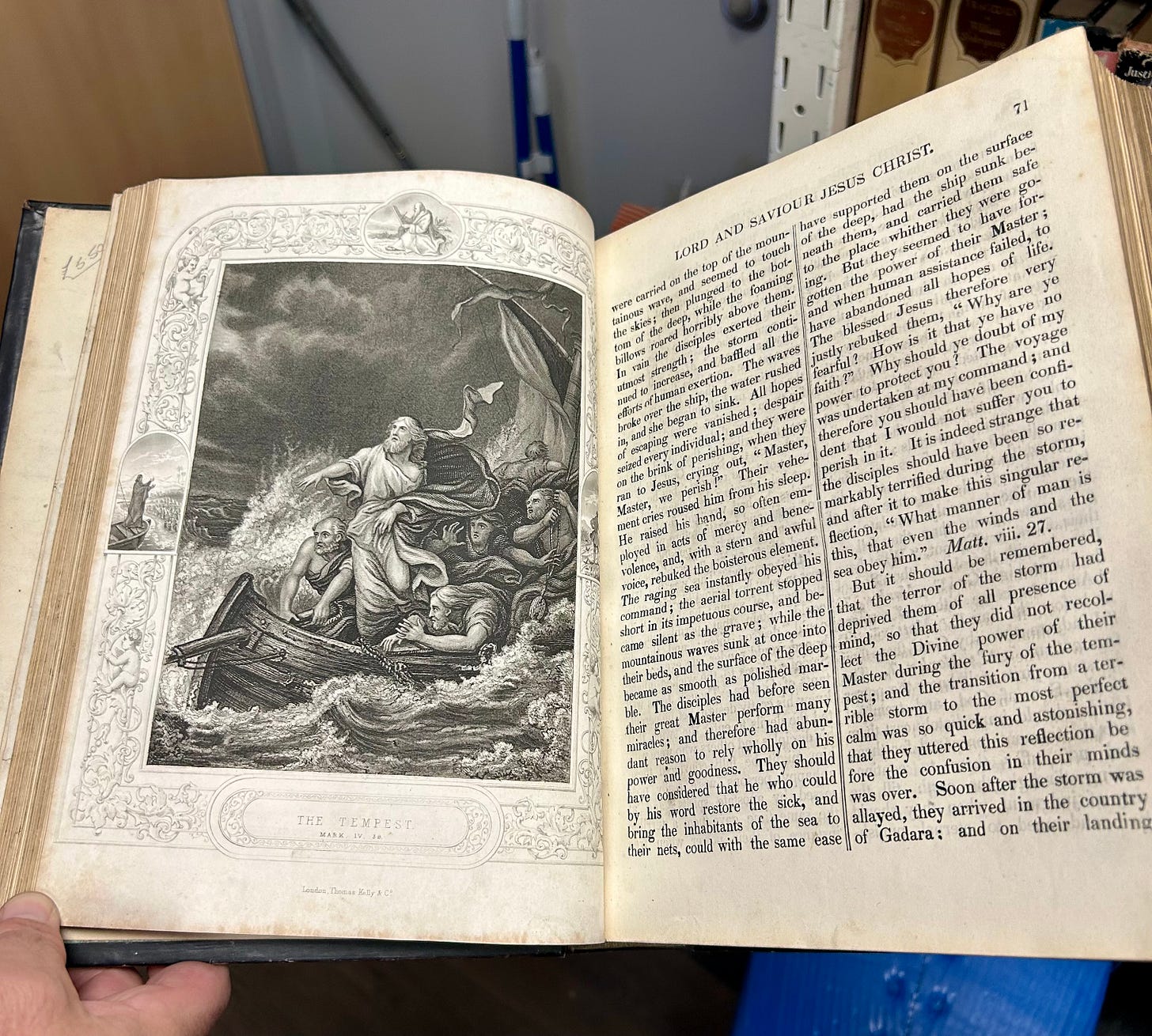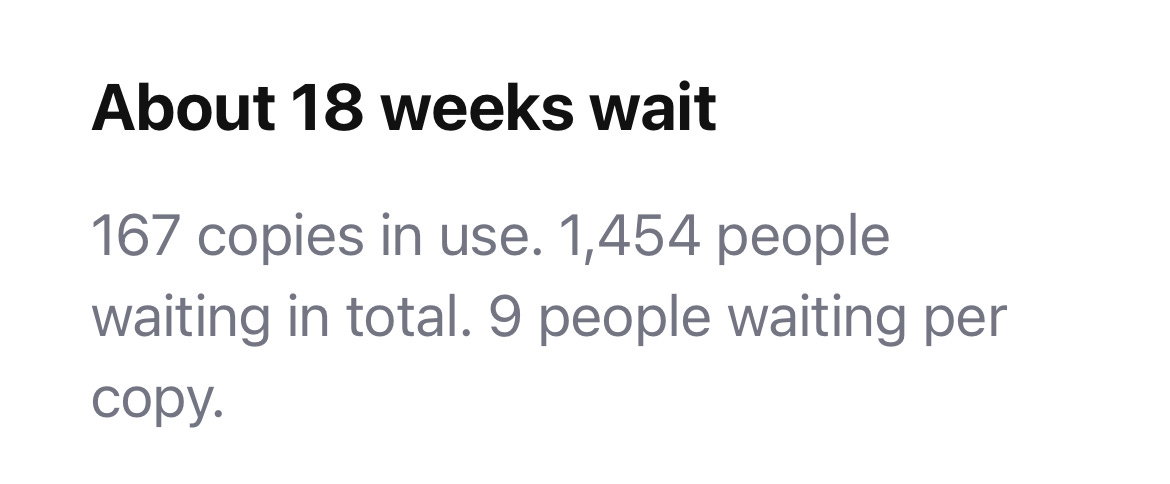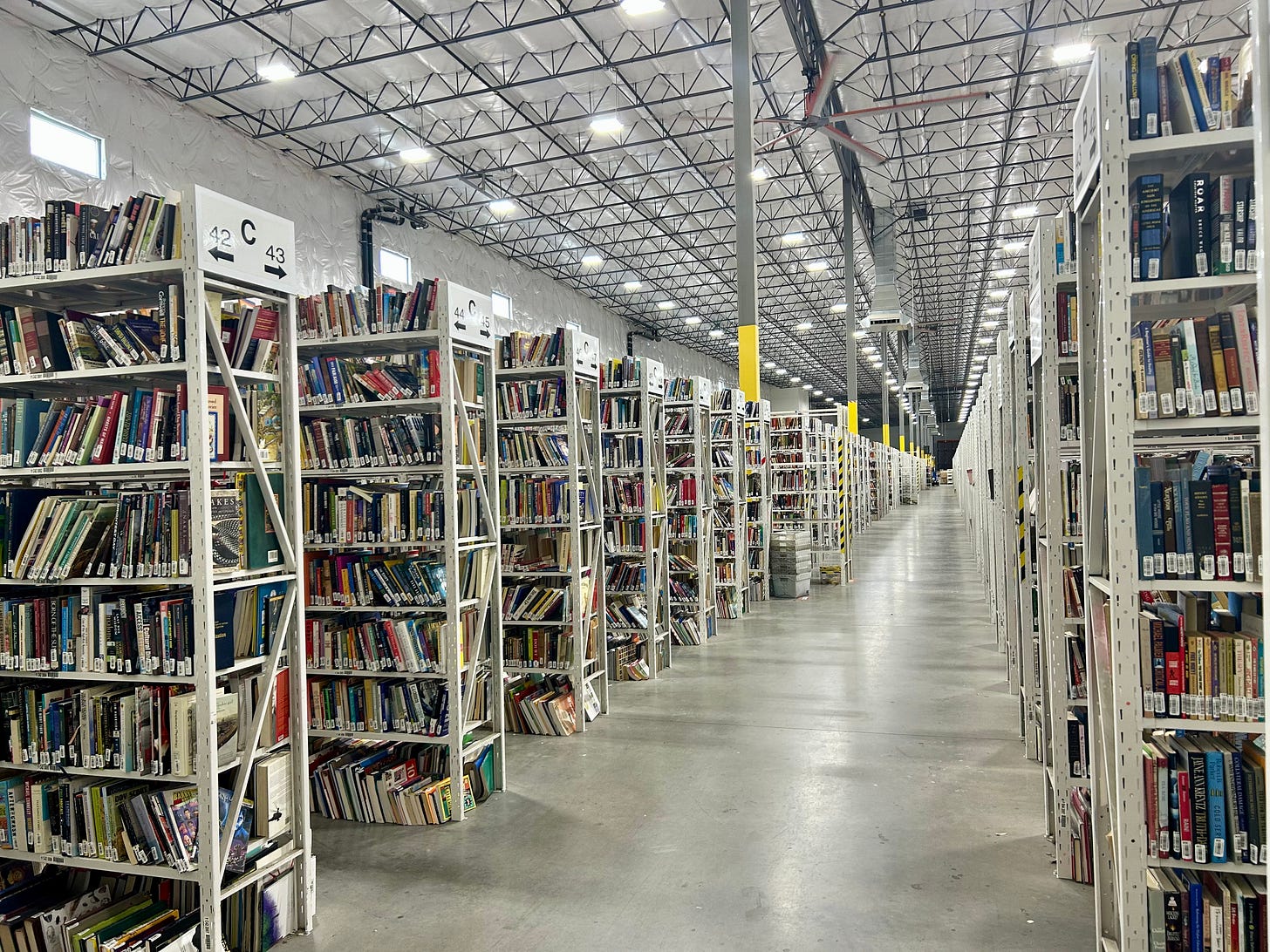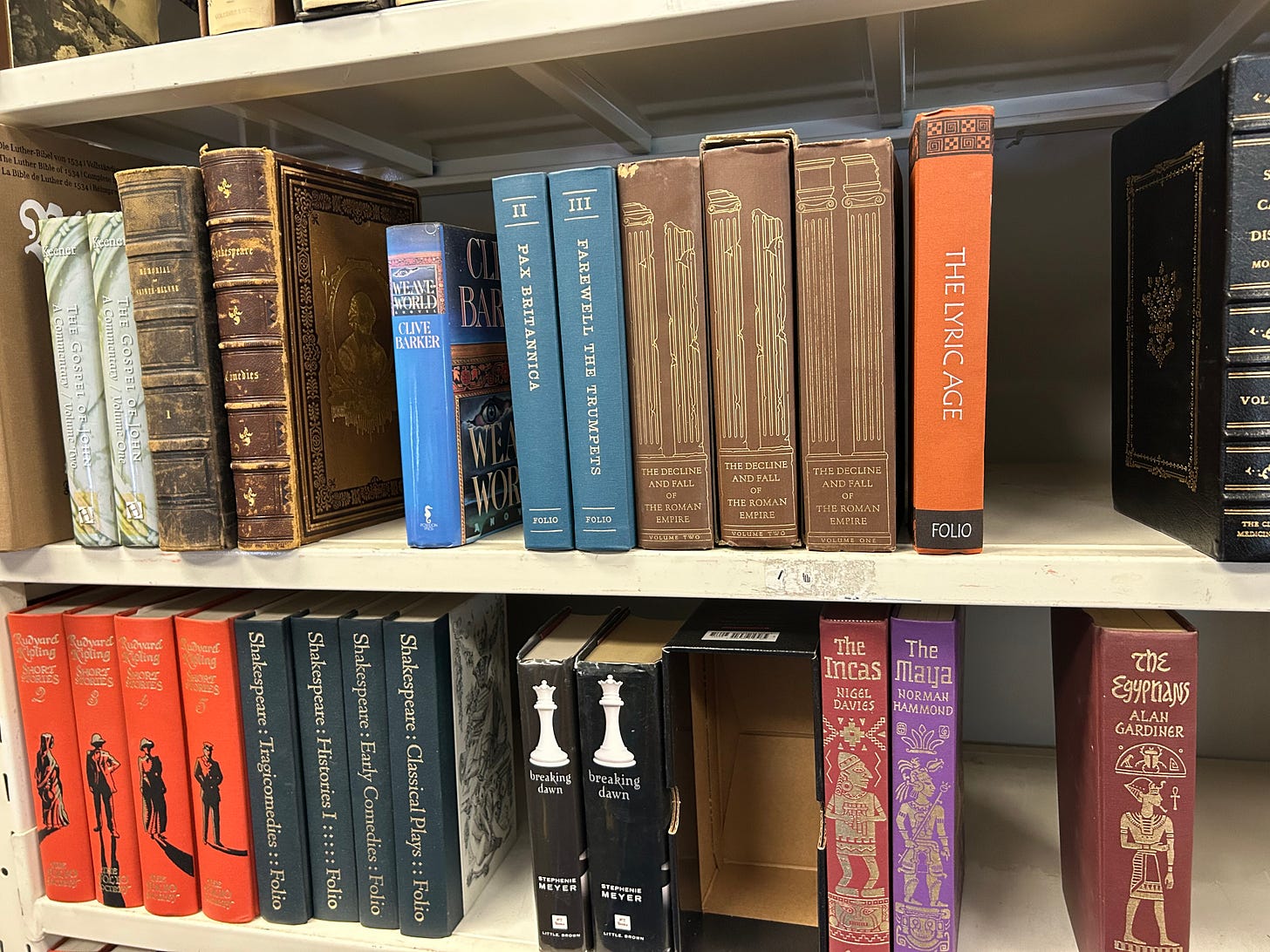Inside ThriftBooks, your local library's low-cost BFF
Nothing says "circular economy" like a warehouse full of 2.5 million used books.
When your local library doesn’t carry a book—or when it does, but the wait time for a hold is months long—where do you turn?
I’m lucky to live just a 10-minute bike ride away from an incredible independent bookstore, so for years, I’ve hopped over there to purchase a brand-new copy of whichever title I’m after. But I whip through a couple books a week, which means this habit gets a little costly. Standard book prices have recently gone up, and it doesn’t always make sense for me to pay $20-30 for a book I’m not sure I’ll like, so I’ve begun to incorporate a new resource into my TBR-culling: ThriftBooks.1
For the uninitiated, ThriftBooks is a website through which you can buy virtually any book under the sun—new, used, and rare copies included. It’s like eBay for books, though the company also sells through eBay itself. Though today it’s the largest online seller of used books, ThriftBooks began in 2001 as a cluster of miniature online bookshops, each of which operated under a different name on Amazon in order to fly under the growing e-commerce site’s radar. Now it’s big enough that Amazon is no longer a competitor, and its inventory is so vast that it’s stored in five whopping warehouses scattered throughout the country. True to the brand’s name, used books purchased through ThriftBooks often cost just a few dollars, and orders over $15 always come with free shipping.
In my personal experience, ThriftBooks is the ideal solution to a culture obsessed with e-commerce but increasingly strapped for cash—not to mention aware of the environmental consequences of relentless consumerism. Orders are shipped fast, but they often cost less than they would if you bought the books new. Each order also ensures that a well-loved book skirts the landfill, landing instead in a new person’s hands. Hence my tendency to navigate to ThriftBooks’ website when, say, Keveh Akbar’s Martyr! will take 18 weeks to receive through my local library.
Last time I placed a ThriftBooks order and received the initial shipping notification, I saw something I’d never noticed before: my shipment was coming from Tempe, a city bordering my own. I posted a cheeky Substack Note about being impatient and wishing I could just pick up my order, and then I thought: What if I reached out to ThriftBooks to ask if others were also using the site as a library supplement? You’ve gotta shoot your shot, right?
Roughly three weeks later, I found myself standing in ThriftBooks’ 190,000 square foot warehouse in a suburb 20 minutes from Phoenix, Arizona. Imagine a Costco, but instead of massage guns and TVs and bulk granola bars, there are shelves upon shelves of books. That’s what ThriftBooks’ Phoenix processing center, or PC, is like, minus (thankfully) the screeching children and without (regrettably) the free samples of frozen chicken taquito. Rows upon rows of bookshelves fill a majority of the PC, where employees wearing earbuds process incoming books, shelve them, and pull them out again to wrap up for new orders.
According to William Shelton, those shelves store about 2.5 million books at any given time. William is the director of ThriftBooks’ collectibles and indirect procurement department, which means he’s ultimately responsible for all of the rare books that make their way onto ThriftBooks’ shelves. (More on that later.) He can’t tell me how many books ThriftBooks sells each day, but he does say that if I were to return in two weeks, those 2.5 million spots on the bookshelves would contain different titles.
William has just given me an hour-long tour, but I’m still pelting him with questions, and he’s enthusiastically fielding all of them. It’s here, looking upon so many industrial bookshelves that the rows taper off into nothing, that I ask him if I’m in good company—if, like me, other ThriftBooks customers tend to use the site as a supplement to their local library.
Apparently, they do. Not only are people using ThriftBooks to get their hands on a book they otherwise wouldn’t be able to grab for free or on the cheap, but they’re responsible for ThriftBooks’ new buyback model, which allows readers to trade in a book for cash.
“Our customers would reach out to us and say, ‘Hey, I’ve read the book, it was great—now I don’t know what to do with it,’” William explains. “So we pitched the buyback program as a way to say, ‘Great! Now let’s give someone else the opportunity to cherish this book as much as you did.’”
Though the buyback program plays a role in ThriftBooks’ constant exchange, most of the company’s inventory arrives by way of Goodwill, the Salvation Army, and Half-Price Books, which receive far too many used books to sell on their own. These brands sell pallets of books to ThriftBooks for less than market value, and ThriftBooks’ receiving department sorts through the stash, deciding which books to keep and which ones to donate or recycle. Donated books tend to end up at schools overseas, while the pages from recycled (AKA truly unsalvageable) books are shredded and turned into new paper.
When a book is accepted—which is most of the time—it’s priced to fair market value and placed on one of ThriftBooks’ zillions of shelves. With that many shelves, you’d assume books are at least separated by fiction vs nonfiction, right? Or even sorted alphabetically by name? Nope. Books are placed anywhere there’s room for them, just like my chaotic bookshelves at home. Cookbooks with Bibles, travel guides with psychological thrillers, chick lit with craft manuals. Every book’s barcode is scanned to its particular shelf, so “order pullers” will know exactly where to find it, but it’s a bit dizzying to look at.
Once an order puller has, well, pulled an order, they place the purchased books in a cubby for packaging associates to wrap up. It’s here that I confirm ThriftBooks does partner with brands like Hello Fresh, Total Wine & More, and Chewy, whose coupons are slipped into each order to offset shipping costs. For a while, ThriftBooks was making an effort to feature a different brand each month; now those partnerships are a little more fluid.

William is most excited to show me the rare books section of the PC. Though he refers to this section as “the vault,” it’s actually a small part of the PC blocked off by a chain link fence, plus a small, climate-controlled office where the collectibles team works. In the vault are medical texts in Latin from the 1700s, leather-bound volumes about English law, collections of bird-related watercolors twice the size of my coffee table. I’m looking at stacks of vintage J.R.R. Tolkien and ancient Shakespearean missives when I notice two copies of Stephenie Meyer’s Breaking Dawn next to an empty black box.
“Twilight?” I ask, pointing at the object of my middle school obsession.
“Oh, yeah,” William says. “Box sets go for far more than individual books—we just can’t keep them on the shelf. So when we can, we like to build sets.”

But some of ThriftBooks’ most cherished products aren’t museum-quality collectibles, like the book pictured above. The company’s circlular model is so circular that sometimes, customers end up receiving the same exact copy of a book that they owned in the past. William tells me that on multiple occasions, he’s heard from customers who have purchased a book for their kid, only to see their own name—or a family member’s inscription—on the inside of the front cover. And once, when a college student’s textbooks were stolen, ThriftBooks heard about it and offered to replace the books free of charge. Several of the “new” books she received were the very ones that had been stolen from her; the thief had sold the stolen books to Half-Price Books for quick cash, and Half-Price Books had sold them to ThriftBooks, inadverdently completing the circle.
Therein lies the charm of the circular model: it trades the “one-and-done” perspective for one that fosters sustainability, rejects the kind of consumerism that demands everything is shiny and new, and passes the love to another person. To be sure, ThriftBooks isn’t the only organization working this way; AbeBooks, Book-Off, and even my favorite indie bookstore—literally called Changing Hands—are also committed to helping every book be cherished for as long as possible. But in a world obsessed with instant gratification and turned off by friction, ThriftBooks is accessible, which means it’s helping new folks get on board with the model.
It’s my hope that as more people realize the economic, environmental, and even emotional benefits of circular commerce models, other everyday products will become easier to purchase through ThriftBooks-like storefronts. Stores like Goodwill and sites like eBay, Mercari, Poshmark, and even the dreaded Facebook Marketplace are great starts, but they’re overwhelming, and dealing directly with individual sellers means you run the risk of getting scammed. As a supplement to these platforms (and, as always, the library), what if more of us replaced our broken smartphones with used ones from sites like Gazelle? What if there were reliable sites made for buying and selling pieces of vetted small kitchen appliances, home decor, wool blankets, and the boring stuff we’ve been trained to turn to Amazon for, like USB-C chargers and phone cases? Would it become easier to buy lower-cost goods, earn a little beer money, and divert waste from landfills?
It’s just an idea. But standing in ThriftBooks’ warehouse, looking at the spines of millions of gently-loved books, it’s easy to believe it’s a good one.
What’s been inspiring me lately:
✰ Frida, a ballet retelling of Frida Kahlo’s life story by choreographer Annabelle Lopez Ochoa and composer Peter Salem. I had the privilege of seeing this with my partner on Valentine’s Day, and both of us were absolutely blown away by the emotion conveyed via dance, music, and set design alone. I’m not sure if Frida will be joining symphonic halls in other cities anytime soon, but I hope it does, because I won’t stop telling people to go see it.
✰ All Fours by Miranda July. I really like how July’s writing style has evolved since her 2007 book of stories No One Belongs Here More Than You—the dry humor is top notch and she strikes a perfect balance between action and interiority. I devoured this in a single night.
✰ Lorde’s music, for some reason? I know she hasn’t come out with anything new recently, but her songs have suddenly struck me as uniquely creative for the mainstream pop scene. I like that her lyrics share what appears to be a strong sense of self and that the melodies feel very dynamic; beyond that, I have no idea how to talk about music.
This isn’t a sponsored article! I’m just a big fan.











This was a fantastic read, I’ve loved thriftbooks for ages and am so happy to hear they’re as wonderful as I could have hoped. Thanks for sharing!
We buy quite a few books a year from Thriftbooks. Then, a couple times a year, we cull the books we don’t need to keep and drop those books off at our local library. The library has an auxiliary volunteer group that sells the books and uses the money to support the library. A nice recycle system!